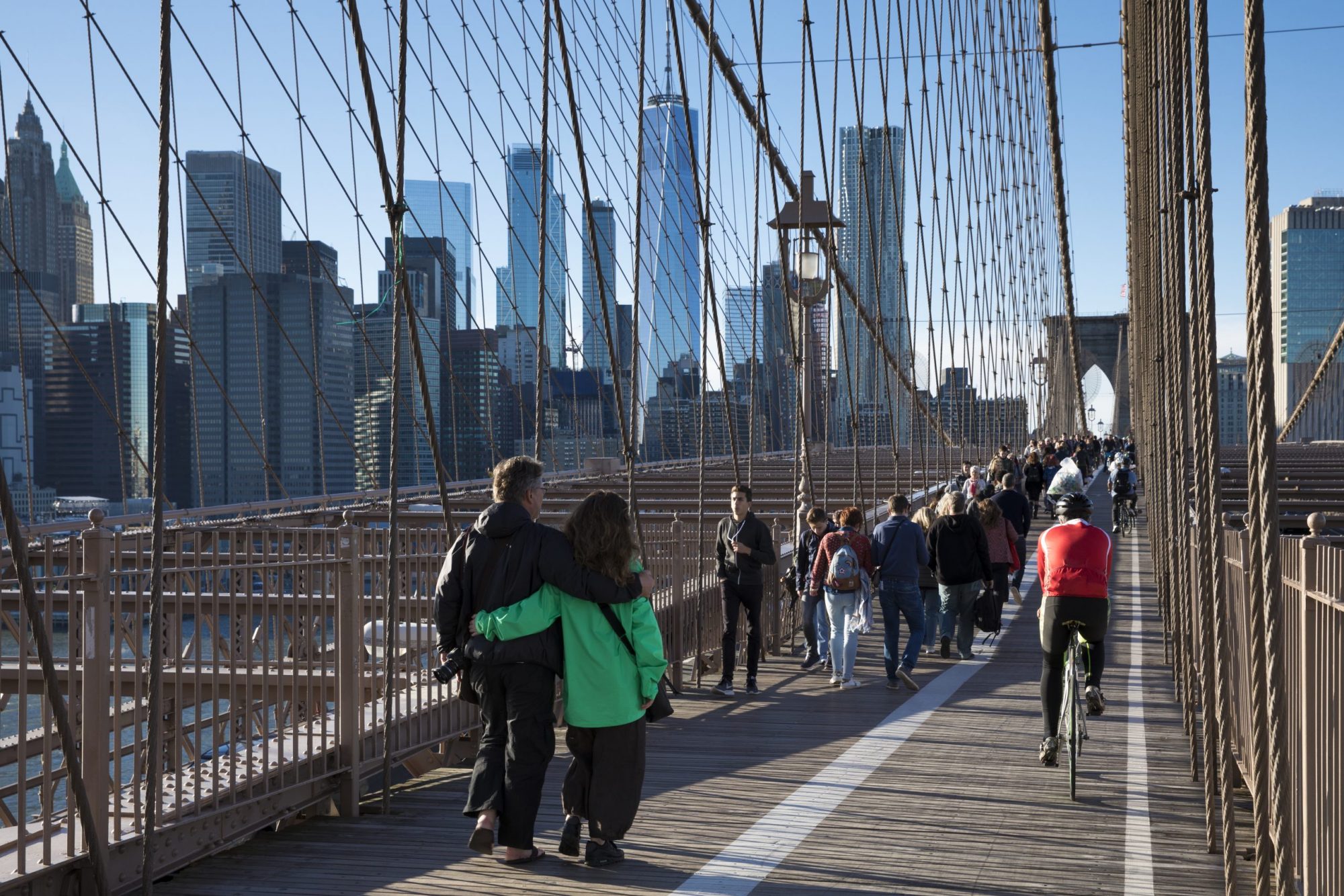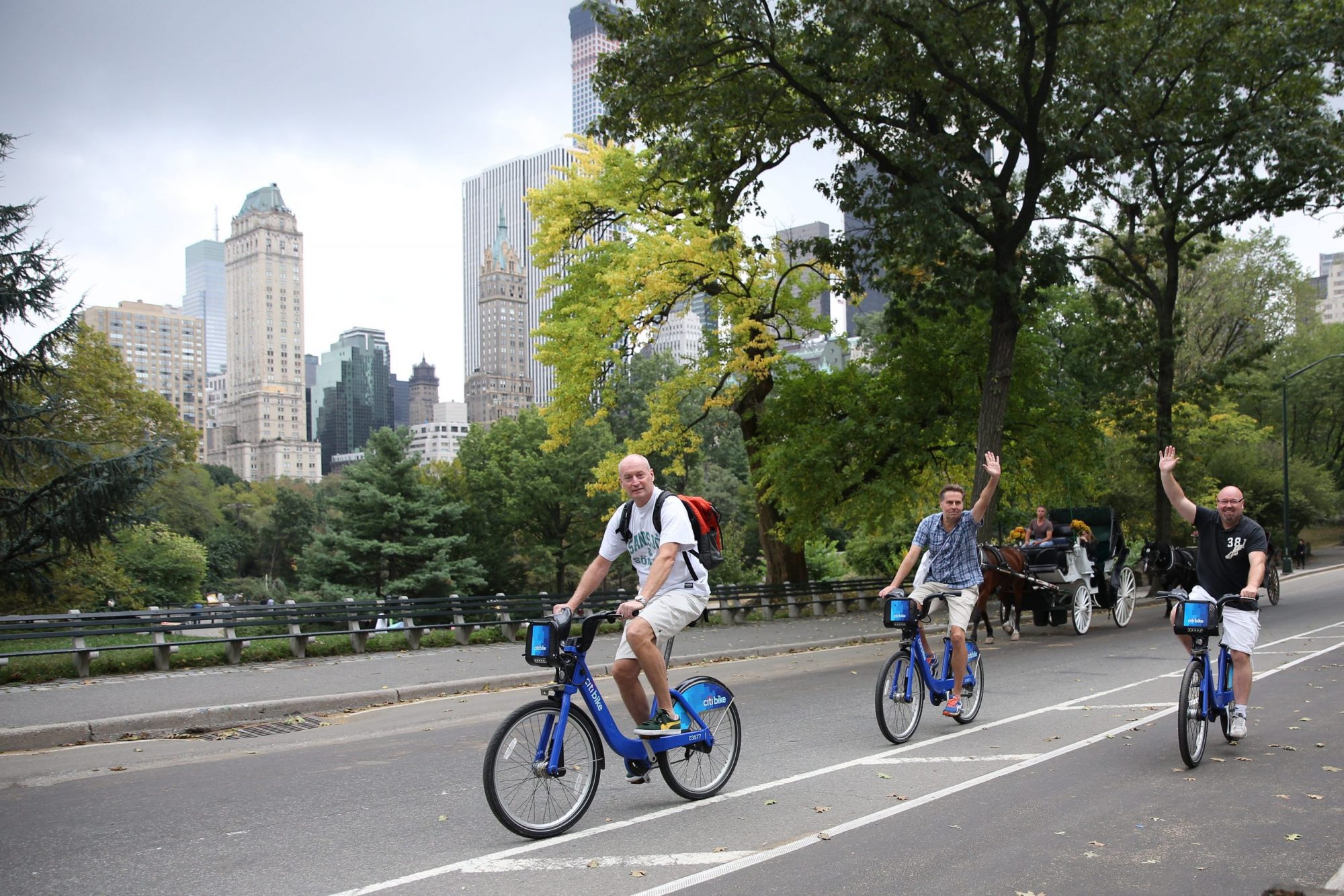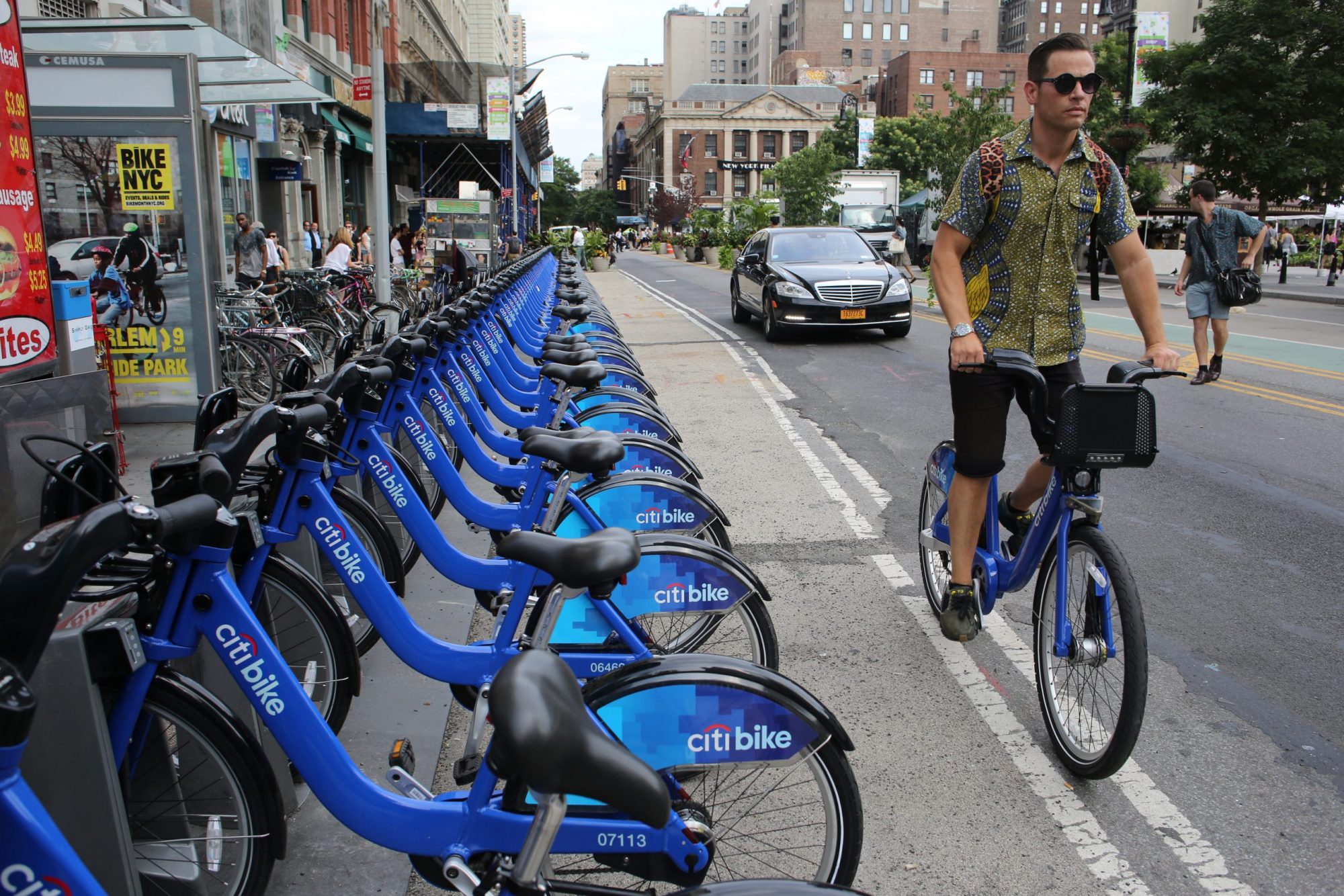Cycling in New York City: where to go, how to rent bikes and other tips

As one of the world's largest and busiest cities it may appears that New York City isn't the most cycling-friendly place - but dig a little deeper and you'll find a city perfectly suited to life on two wheels.
Largely flat and devoid of punishing hills seen in other American cities, it is possible to cruise past the heavy traffic in the dedicated cycle lanes around the city, of which more and more are appearing.
A little insider knowledge always helps and so here’s our guide to cycling in New York City.
>>> What's the best city in the world for cycling? New study lists the favorites
Where to ride

Currently, the city has almost 1,250 miles of bike lanes with around 200 miles of those protected. NYC Mayor Bill Di Blasio has committed to increase this number by the end of 2021, and temporary bike lanes put up during the Covid-19 pandemic are now becoming permanent fixtures, helping to improve the city’s cycling infrastructure.
These protected bike lanes (marked out in green) can take you great distances. For example, join the Allen Street bike lane at Canal Street in Lower Manhattan and you’ll find yourself cycling between Little Italy and the Lower East Side before joining First Avenue. From here you’ll pass through the East Village, continuing your journey north through the east side of Manhattan. The lane continues as far as East Harlem and can even connect you to the Bronx.
The latest race content, interviews, features, reviews and expert buying guides, direct to your inbox!
On the west side of Manhattan, the Hudson River Greenway follows its namesake the length of the island. It’s a two-way bike lane that traverses south as far as Battery Park on the tip of Manhattan and north as far as Inwood Hill Park. For the most part, it's a relaxing ride, with plenty of places to stop along the way to take in the views of both the Hudson River and the city. The Hudson River Greenway is also a great way to connect you to many of New York’s famous sights including the 9/11 memorial, the One World Observatory and The High Line downtown and the Intrepid Sea, Air and Space Museum and The Met Cloisters gallery uptown.
>>> Where to go for warm weather cycling in the spring
The bridges
New York is a city of islands, which in turn makes it a city of bridges, too. You can cycle across a number of them, allowing you to move with relative ease from one borough to another.
The quintessential ride is across the Brooklyn Bridge from lower Manhattan. You'll share the path with pedestrians but the reward is incredible views of the city's famous skyline, it's harbor and even the Statue of Liberty.
Once you're done exploring Brooklyn you can cycle over the Pulaski Bridge into Queens. From here you can head north through Long Island City, stopping to take in more stunning views across the East River from Gantry Plaza State Park. Bike lanes will eventually connect you to the Queensborough Bridge. From here you'll cross the bridge back into Manhattan.
To escape the hustle of bustle of the city you can ride across the George Washington Bridge. Located in Manhattan's Washington Heights neighborhood, the world's busiest motor vehicle bridge does thankfully have a cycle path - although it's very narrow. Once you're across the Hudson and into Fort Lee, New Jersey you can enjoy the ride along the scenic Henry Hudson Drive (more commonly referred to as River Road). It's a popular loop with local roadies, with Route 9W serving up yet more views and a few hills to boot.
The parks

Manhattan's Central Park is home to a car-free 6.2 mile loop that takes you past many of its most iconic landmarks, including the Great Lawn and Belvedere Castle, and the loop is a favorite for all of the city's cyclists, whether club riders or tourists on city bikes.
>>> What to wear when cycling throughout the year
You can join the loop at a number of points throughout the park but always remember to cycle in a counter clockwise direction and respect the 20mph limit in the park.
Brooklyn's Prospect Park offers up another car-free loop. It's a little under 4 miles and follows the perimeter of the park's 585 acres. You'll enjoy a dedicated bike lane the entire route as well as plenty of greenery. The speed limit here is 25 mph.
Weather tips
Cycling around New York means different things in different seasons. The weather varies greatly and it’s worth thinking about that before you travel. If you’re here during summer prepare for very hot and often very humid days. You’ll want to be wearing light, breathable clothing and make sure you carry some water. You’ll need sunglasses and sunscreen too.
>>> How to prepare for hot weather cycling
By contrasts, the winters can be bitterly cold. Cycling in New York during these months means wrapping up warm. A winter jacket, a hat that fits under your helmet and some full-finger gloves are essential.
Spring and fall are usually very pleasant. A wind or light rain jacket should be all you need on top of the usual gear you cycle in.
Hiring a bike

There are some 14,500 Citi Bikes in New York City, docked at 950 stations in Manhattan, Queens, Brooklyn and Jersey City. Hiring one is a great way to not only explore the many neighborhoods but to also help you find your cycling legs in the city that never sleeps.
If you’re visiting New York for a day you can get a 24-hour pass for $12, giving you unlimited 30-minute journeys within the timeframe. However, for every additional 15 minutes over this time you'll be charged $4. You can also take single 30-minute trips for $3. If you're staying longer there are weekly, monthly and annual passes.
>>> How to hire a city bike for your commute to work
It’s worth noting that the city is expanding the scheme and by 2023 there will be many additional bikes and docking stations in the Bronx and further afield in both Queens and Brooklyn.
Of course, you are not constrained by City Bikes. There are hundreds of shops that rent out bikes for day or multi-day use and these are often more cost-effective if you are planning on riding for more than 30 minutes at a time.
Staying safe
Cycling in any city can seem daunting, and New York even more so. But, just as you would anywhere, the main advice is to ride with caution but also with confidence. When cycling in bike lanes or on the streets, ride with the traffic, hold your line and avoid any erratic movements. Make sure to obey traffic lights and signal your turns with your hand. And please stay off the sidewalks!
You’ll often be riding past lots of parked cars. Make sure you allow plenty of room between you and the cars and watch out for doors opening into your lane. It's also not uncommon for vehicles to park illegally in bike lanes, a frustrating occurrence but one to be aware of and always keep your eyes fixed ahead.
Staying safe also means staying seen. When it starts to get dark make sure you’re using lights and that you’re wearing something reflective. And it goes without saying that wearing a helmet is a really good idea.
Finally, cycling in New York is loud. Manhattan, particularly, is a cacophony of noises. If it’s your first time cycling in the city it will take a little getting used to. But stay focused and you should find it an exhilarating experience that allows you to immerse yourself in one of the greatest cities on the planet.
Luke Friend has worked as a writer, editor and copywriter for over twenty five years. Across books, magazines and websites, he's covered a broad range of topics for a range of clients including Major League Baseball, Golf Digest, the National Trust and the NHS. He has an MA in Professional Writing from Falmouth University and is a qualified bicycle mechanic. He has been a cycling enthusiast from an early age, partly due to watching the Tour de France on TV. He's a keen follower of bike racing to this day as well as a regular road and gravel rider.